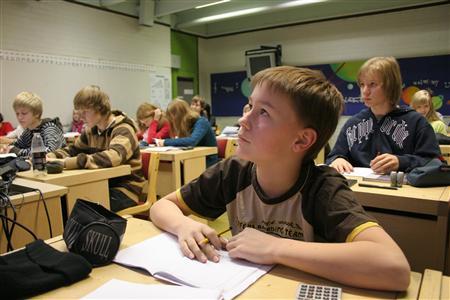
On the contrast, despite the constitutional right of free and compulsory education, 22 million children are still out-of-school in Pakistan. This approximates to almost 47% of its total school-going age population. As figures reveal, almost 70% of these children have never been to school whereas 30% decided to drop out. The problem, therefore, is both of access to education and retention in schools. The factors contributing to this are many and relate to culture, society, financial constraints and budget, and governance besides others. However, despite these odds, public-private partnerships such as voucher schemes and per-child subsidy in Punjab and reconstruction of school buildings and provision of missing facilities in K-P have increased the enrolment rate in the last 10 years.
Despite the above mentioned policy efforts and changes in the governance structure pertaining to education ie decentralisation, the present state of the education sector is discouraging. The quality of education provided is largely questionable. Less than half of third graders can read a sentence in Urdu and only 31% can write a sentence using the word “school” in Urdu.
Are students then equipped to take on those from developed systems such as Finland? Do the students have knowledge beyond what is rote-learned in classrooms? Are their critical and analytical skills developed enough to participate in international challenges? The system is, sadly, neither producing nor nurturing heroes.
Access and quality of education are not exclusive. Enhancing the quality while ignoring access, only exasperates the social divide; whereas focusing on increasing access without promoting quality will not create impact. It will not help you put the economy on track using education as a wild card like Finland did some five decades ago.
There is a common ground: Technology and Innovation. M-Learning has proven potential of turning around how common technology such as mobiles and television screens can be used as low-cost quality education tools. Amazonas state in Brazil, India and even Mexico have experimented with interactive educational television programmes for rural communities. Afghanistan, for example, after approval from the Ministry of Education, has implemented a mobile app for basic literacy classes. And in rural China, multiple computer and mobile based training programmes have been rolled out for teachers. Learning through gaming is the latest education technology being worked on.
Pakistan has launched its National Education Policy 2017. The document does mention the goal of achieving universal education and the intention to introduce information technology to enhance both the access and quality of education. However, no road map has been defined yet. The question then remains, is the state in a position to overcome this challenge on its own? Does it need technocrats and entrepreneurs to jump in and contribute to the education sector? How dedicated is the government in declaring education a national emergency?
Going by the education sector performance of the PTI-led government in K-P, its political will on the national level, and its openness to include the private sector in policy-making in the past two-months, we can expect big things. Pakistan is in need of bold decisions — bold decisions similar to those taken in Finland in the 1960s. When I claim that Pakistan needs to declare an “education emergency” throughout the country, I am implicitly asking a question to every Pakistani reading this, “Are we ready to give whatever it takes for us to ensure that any child born in Pakistan gets access to quality education as a fundamental right?” I hope we are and I hope we do.
Published in The Express Tribune, November 9th, 2018.
Like Opinion & Editorial on Facebook, follow @ETOpEd on Twitter to receive all updates on all our daily pieces.



















COMMENTS (1)
Comments are moderated and generally will be posted if they are on-topic and not abusive.
For more information, please see our Comments FAQ